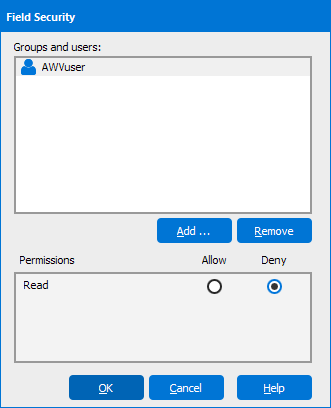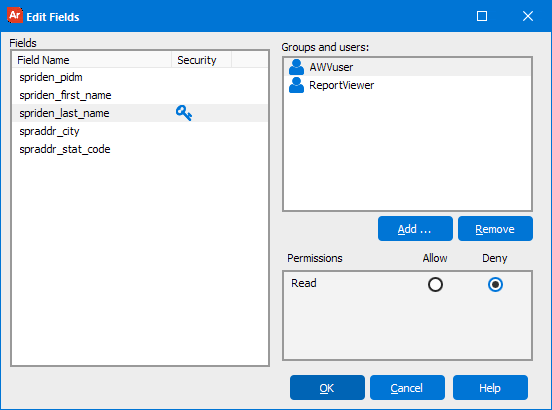Report Query - Security
Security on a report can be managed at the report level (i.e., access to who can execute a report based on the group or the user). However, there are times it is desirable to allow someone to execute a report, but limit the fields that they can see. For example, you might want only certain users to see employee annual salary.
To limit access to a particular field, click on the key icon above the field or column. Then click the Add button. A list of all users and groups will be displayed. Select the user or group and select the Allow or Deny radio button. Security can also be added by clicking on the 2 keys icon to the left of the visible field list. By using these, the developer can review what field level security has been set and add, delete, or modify security on multiple fields.
Direct Security: Security explicitly defined on an individual user supersedes any permissions they may have due to membership in one or more groups. For example, if a user is denied permission to a particular field, they will not be able see the field even if one or more of their groups has this permission allowed.
Accumulated Group Permissions: When a user attempts to view report fields, Argos will examine the permissions of all groups that they are a member of. If any of their groups are Allowed permissions, Argos will permit them to see the field in question (unless that user has been directly denied permissions - see above.)
Everyone Group: Pay special attention to permissions granted to the Everyone group as all users are automatically members of this group. It is often a good policy to deny permissions to the Everyone group once other groups have been established.

Review Security for Multiple Fields

On this screen you can manage security for multiple fields in one place. Select the fields you need and then add groups and users to set their basic permissions. You can also use this screen to reorder fields in the dataset (using the up and down arrows).
If you need additional help creating DataBlocks, refer to the Getting Started with DataBlocks page.